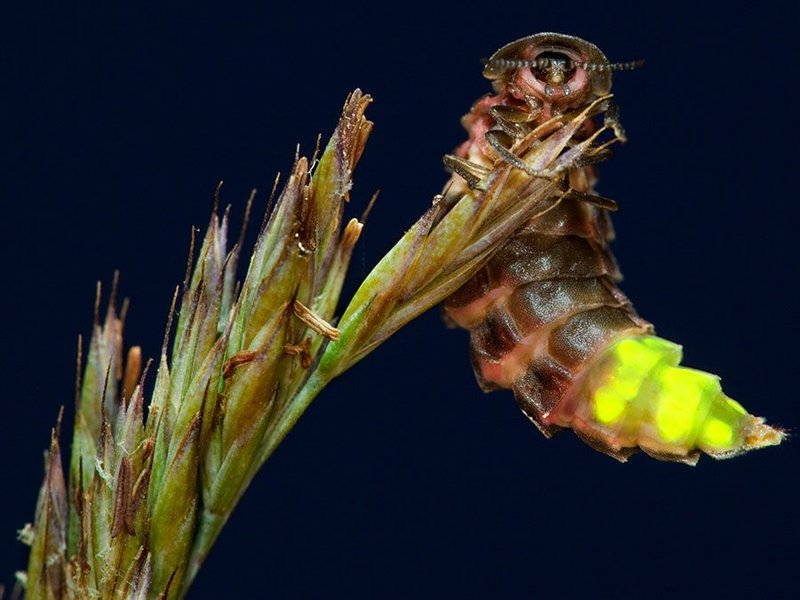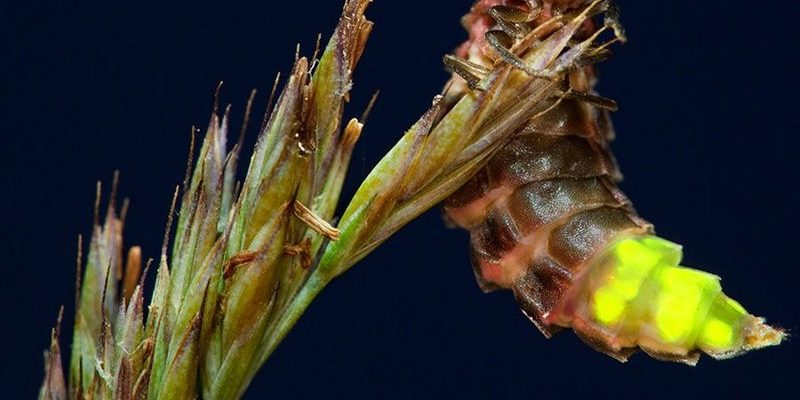
But where exactly can you find glowworms? The documented range and distribution of glowworms is quite fascinating. These luminescent insects, mainly belonging to the family Lampyridae, are not just confined to one part of the world. They thrive in various habitats, each with its own unique conditions. Let’s dive into the world of glowworms, exploring where they live, how they thrive, and why they matter to the ecosystems they inhabit.
What Are Glowworms?
Before we buzz into their range and distribution, let’s take a moment to understand what glowworms really are. Glowworms aren’t just one type of insect; the term refers to several species across different families that exhibit bioluminescence. Most commonly, when we think of glowworms, we’re referring to certain beetles in the Lampyridae family, which are often found in damp environments.
These insects produce light through a chemical reaction in their bodies, a process known as bioluminescence. The glow serves two main purposes: attracting mates and luring prey. Imagine being a little insect attracted to the soft light—only to end up in the jaws of a hungry larva! It’s a harsh world out there, but that’s nature for you.
So, where can you find these luminescent wonders? It varies, but glowworms are found on every continent except Antarctica. Their adaptability to different climates is quite remarkable.
Geographical Distribution Of Glowworms
Glowworms primarily inhabit areas that provide suitable conditions for their life cycles, which means moist environments are essential. They can be spotted in various regions, from the temperate zones of North America to the tropical rainforests of Australia and New Zealand.
In New Zealand, for instance, the *Arachnocampa luminosa* is a prime example of a glowworm. It’s famous for illuminating caves, creating a starry effect that draws thousands of tourists each year. These glowworms prefer dark, humid caves, where they can safely hang their silky webs to catch unsuspecting insects.
In North America, the *Lampyridae* species can be found in marshes, forests, and even your back garden on warm summer nights. They might not be as dramatic as their New Zealand cousins, but they light up the night just the same.
Preferred Habitats of Glowworms
So, what makes a location ideal for glowworms? They have a few preferred habitats that meet their needs for moisture, temperature, and food. Here are some of the most common types:
- Caves: Many glowworm species thrive in dark, damp caves. The moisture and lack of light create a perfect environment for them to live and reproduce.
- Forests: Temperate and tropical forests provide ample food sources and the right humidity levels, making them attractive to glowworm populations.
- Wetlands: Areas like swamps and marshes offer the moisture glowworms need and are often rich in insects that serve as food.
- Gardens and Backyards: Don’t overlook your own backyard! Glowworms can also be found in gardens, especially if the conditions are right, like humidity and a presence of insects.
Each habitat has its own unique challenges. For example, in caves, glowworms must compete for space and food, while in forests, they may face predators. However, their adaptability is what helps them survive.
The Importance of Glowworm Distribution
Understanding the distribution of glowworms isn’t just about where they live; it’s crucial for several reasons. First, glowworms play an essential role in their ecosystems. They serve as both predators and prey, creating a balance in nature. Their larvae eat other insects, helping to control pest populations, while adult glowworms attract various predators.
Second, glowworms are indicators of environmental health. Since they require specific conditions to thrive, their presence can indicate the quality of the habitat. If glowworms start to disappear, it might signal underlying environmental issues, such as pollution or habitat destruction.
This means that studying their distribution is vital for conservation efforts. Protecting their habitats ensures that future generations can enjoy these little wonders and the magic they bring to our landscapes.
Challenges to Glowworm Populations
While glowworms are resilient, they aren’t without their challenges. Habitat loss is a significant threat to their populations. Urbanization, agriculture, and climate change have all contributed to the degradation of their natural environments.
In particular, light pollution can disrupt their mating rituals. Those tiny lights that are so mesmerizing can also cause confusion for potential mates. When artificial lights dominate the night sky, it’s harder for glowworms to locate each other, leading to reduced reproduction rates.
Another issue is pesticide use. Many of these chemicals not only harm the insects that glowworms prey on but can also directly harm glowworms themselves. Without a healthy insect population and a safe habitat, glowworms struggle to survive.
Glowworms in Cultural Context
Glowworms have captured the imagination of many cultures around the world. In New Zealand, they hold a special place in Māori folklore, symbolizing hope and guidance. Caves filled with glowworms are considered sacred, attracting visitors who come to witness their beauty.
In other cultures, glowworms are seen as symbols of magic, beauty, and even mystery. They remind us of the wonders of nature and have been a source of inspiration for artists and storytellers alike.
Understanding how different cultures view glowworms enriches our appreciation for these creatures. It connects us to nature in ways beyond science, weaving a tapestry of stories that span generations.
Glowworms may be small, but their impact is anything but diminutive. Their documented range and distribution reveal not only where they thrive but also the delicate balance of ecosystems they inhabit. From lush forests to dark caves, these bioluminescent insects bring a touch of magic to our world, reminding us of the importance of preservation.
By appreciating their role in our environment, we can better understand the consequences of our actions. Protecting glowworms not only ensures that we continue to enjoy their enchanting glow but also contributes to the health of our ecosystems. Next time you stumble upon a luminous glowworm, take a moment to appreciate the tiny marvel that lights up the darkness.

